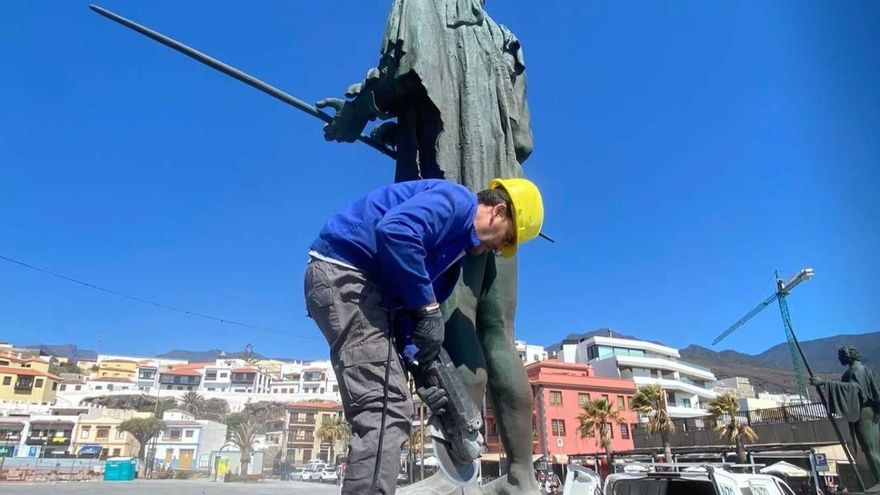
The sculptures of the Guanche menceyes located by the sea in the Square of the Patroness of the Canaries have already begun to be removed. Espacio Bronzo, responsible for the removal process, announced on its social media the start of the works, including the removal of the stone that elevates and secures the sculptures to the ground.
The Candelaria Town Council warns that this is a complex task that will take several weeks, as it requires special care to avoid damage to the pieces.
The removal is part of the comprehensive renovation of the basilica’s surroundings, a project that started last February and will be carried out in several phases. The first phase includes work on Antón Guanche Street, the square next to the old town hall (El Artesano), and the San Blas area.
Other Works
There are also plans for the demolition of a house located at the entrance of the Tapia ravine and the construction of a marine protection wall at the Cueva de Achbinico. Another key element of the project will be the creation of a ramp building that will connect Antón Guanche Street with the square.
The building will house a sacred museum, a multifunctional room, and a tourist office, and will incorporate sanitation works to channel wastewater from the coast to the regional treatment plant.
Although it was initially announced that the ensemble of mencey sculptures would be preserved, it has ultimately been necessary to remove them to facilitate the progress of the works.
Tribute to the Menceyes
The current bronze sculptures were installed in 1993 and are the work of local artist José Abad. They replaced earlier ones made of artificial stone by Alfredo Reyes Darias in the 1970s, which had suffered significant deterioration.
They were commissioned by the Pro Menceyes Guanches Foundation and pay tribute to the nine menceyatos who ruled the ancient kingdoms of Tenerife at the time of the Castilian conquest: Adjoña (Abona), Pelinor (Adeje), Beneharo (Anaga), Romén (Daute), Añaterve (Güímar), Pelicar (Icod), Acaymo (Tacoronte), Bencomo (Taoro), and Tegueste.
Abad conducted a thorough documentation process in historical archives and at the Tenerife Archaeological Museum to give each figure a unique identity. Each of the sculptures displays differentiated physical traits, postures, and attributes, inspired by archaeological objects and the traditional iconography of the ancient inhabitants of the Islands.















